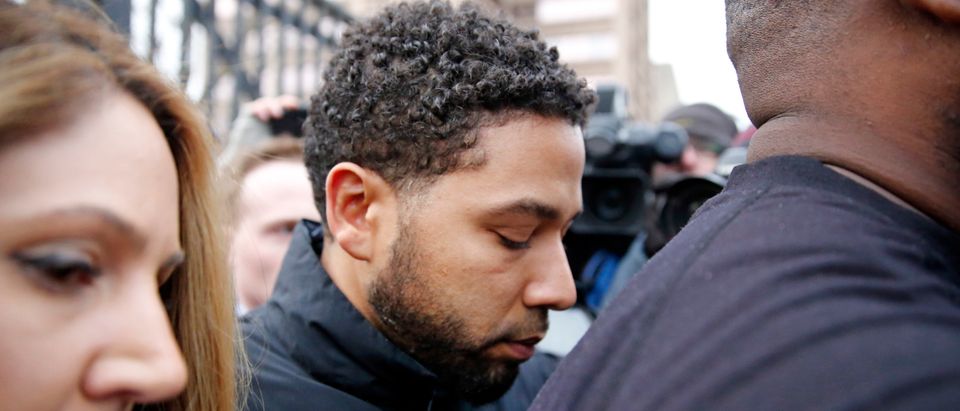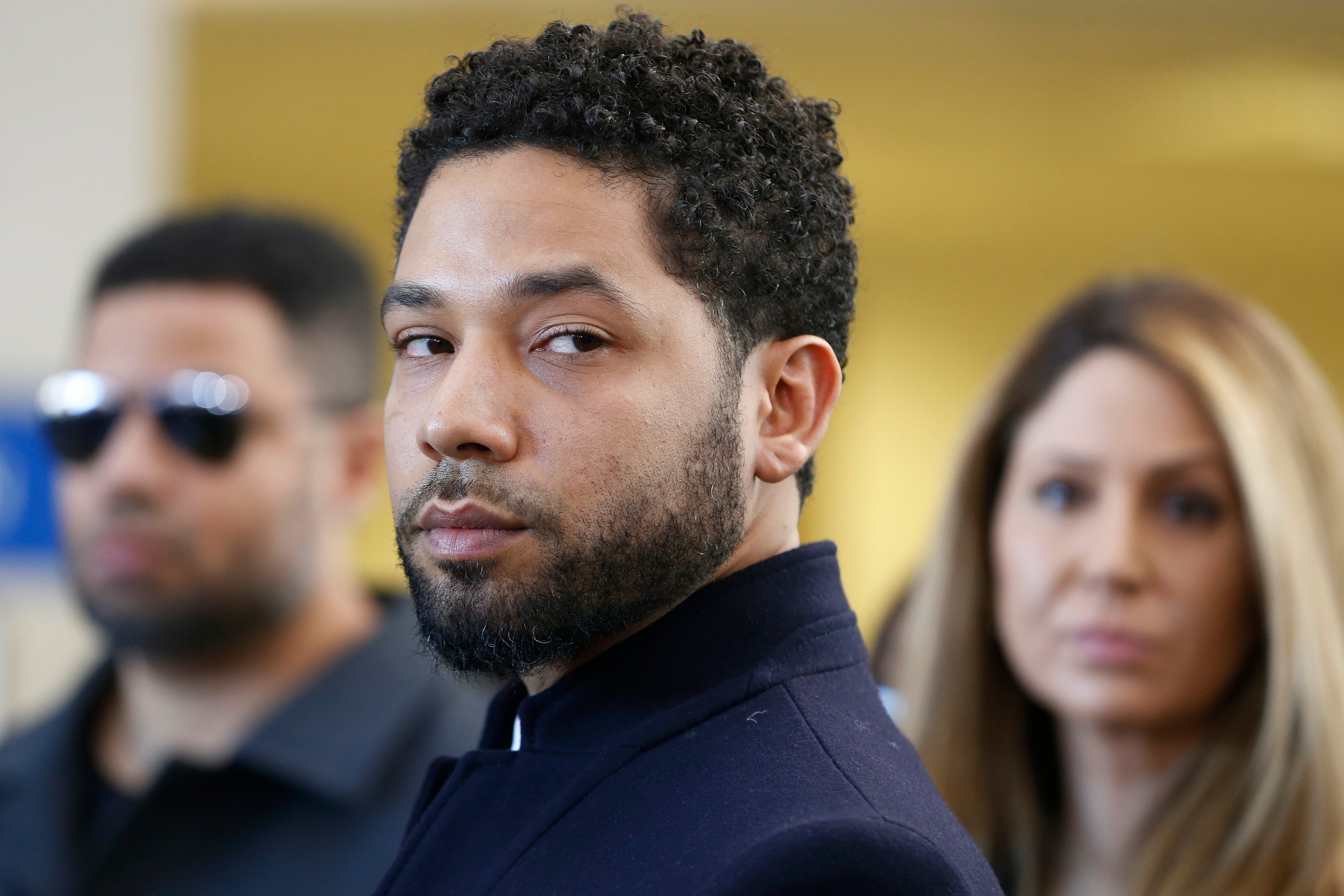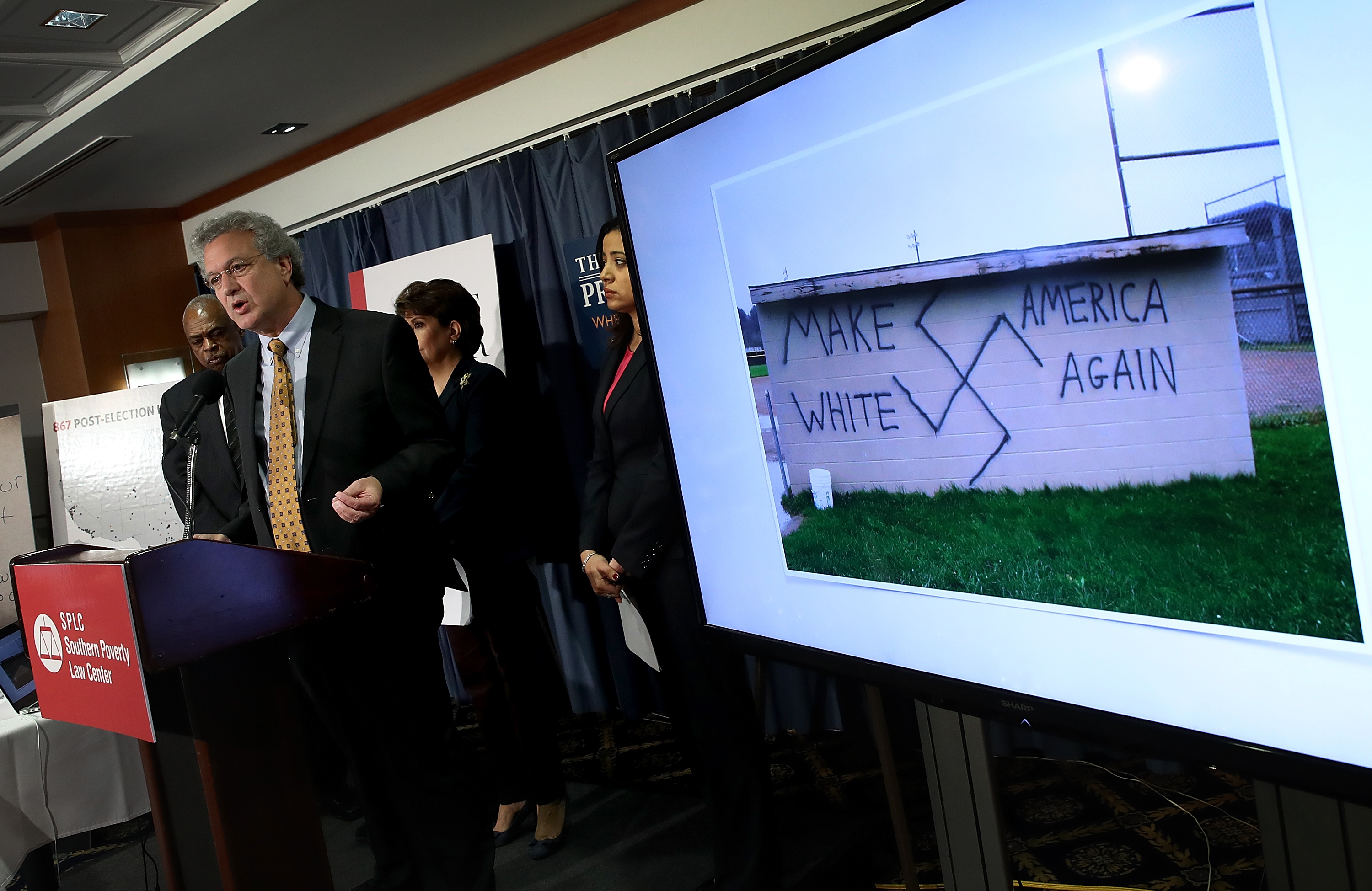Immanuel Christian, Covington, Smollett:
2019 Is Turning Out To Be The Year Of Hate Crime Hoaxes

Nuccio DiNuzzo/Getty Images
Amari Allen’s story was a hoax. Over the past week or two, almost every reading American became familiar with Allen, the dread-locked schoolgirl who claimed that “three white boys” snatched her from a slide on the campus of the prestigious Immanuel Christian School in Smithfield, held her down, and cut off some of her hair while mockingly calling it “nappy.”
Because of the alleged incident’s shocking nature, and te fact that Second Lady Karen Pence was an art teacher there, Immanuel Christian became (yet another) ground zero for a national discussion about race and “privilege.” And then, that discussion collapsed: Allen confessed to literally making the whole thing up.
Allen’s hoax was not some unique, one-off incident. During this past year alone, a number of internationally prominent hate crime and hate incident hoaxes have occurred in the USA. In July, popular Georgia State Senator Erica Thomas claimed that she had been shamefully attacked, in a Publix grocery store, by a white male who screamed at her and told her to “go back home.” In fact, the “white man” turned out to Cuban-American Democratic Party activist Eric Sparkes, who literally showed up at Thomas’ melodramatic press conference to rebut her story.
More recently, on September 12, 2019, someone wrote racial insults, swastikas, and the word “MAGA” throughout two restaurants owned by former NFL player Edawn Coughman. The perp turned out to be Coughman himself, who was spotted leaving the scene by witnesses. Most famously, on January 29, 2019, actor Jussie Smollett – famously mocked as the mad Frenchman ‘Juicy Smolliet’ by comedy legend Dave Chappelle – claimed that he had been attacked at 2am, in the middle of a Chicago blizzard, by two burly white men wearing Trump campaign MAGA hats. Smollett’s bizarre story was exposed as an almost certain lie when two Nigerian brothers, buddies of his from the local gym, confessed to having been paid by Smollett to stage his beating.

CHICAGO, ILLINOIS – MARCH 26: Actor Jussie Smollett after his court appearance at Leighton Courthouse on March 26, 2019 in Chicago, Illinois. This morning in court it was announced that all charges were dropped against the actor. (Photo by Nuccio DiNuzzo/Getty Images)
This year was not unusual. It was, in fact, a bit less active than average on the hate hoax front. Putting together my 2019 book Hate Crime Hoax, I was able to fairly easily compile 409 confirmed hate hoaxes, concentrated in the five years before publication. I defined a “hate hoax” as (1) an undisputed report (police report and/or reputable national or regional media story), of (2) a serious incident (generally felony or misdemeanor offense), that was (3) attributed to dislike of or bias against an out-group, where (4) the narrative of “hate” completely collapsed (with this collapse also being reported). My master list is now up to 611 case studies of hate hoaxes, containing more than 800 unique incidents. To put these numbers in context, less than 7,000 hate crimes are reported to the FBI by police departments in a typical year, and only 8-10% receive the media coverage that would make them potential candidates for my data sets.
Interestingly, hoaxes seem to be most common among the most high-profile, widely reported stories of “hate.” Of the 20-odd hate incident cases, mass shootings aside, that became truly international stories over the past decade and change, literally about half of them – Smollett, Allen, Covington Catholic, Yasmin Seweid and the ripped hijab, Air Force Academy, the “burnt Black church” (Hopewell Baptist), the little Black girl in Grand Rapids who said boorish white men literally peed on her, the Rolling Stone cover story about anti-woman rape gangs at U-Virginia, the Nikki Jolly house fire and the dead purebred dogs, the “nooses on campus” (Wisconsin-Parkside), Duke Lacrosse – turned out to be total fakes. Many hate hoaxers have a taste for the dramatic, which often betrays them in the end.
Why do hate crime hoaxers do what they do? My research uncovered multiple motivations. Many hoaxers seem to have the same mundane, tawdry motives as criminals in general, principally money. For example, the business owner who famously burned down Chicago’s Velvet Ultra Lounge nightclub in 2012 did so entirely to collect a large insurance payout. However, at least as many hoaxers seem to believe they are engaged in a little justifiable exaggeration in the service of fighting real problems (“institutional racism”). At Kean College in 2015, a student leader literally organized a large anti-racist rally, left it to set up a fake twitter account in the campus library, used the account to tweet out death threats to rally participants and other Black students on campus, and then decried those tweets to the rally crowd as examples of racism at Kean. Hashtag #well_played.
Importantly, those hoaxers in the second category often find that they have a preexisting set of natural allies. It no secret that there exists a large and well-funded grievance industry in the United States. The Southern Poverty Law Center alone – an organization which attracted some recent attention after labeling Majid Nuwaz, Ayaan Hirsi Ali, the Center for Immigration Studies, and the Family Research Council “extremists” or hate-mongers – has a well-invested endowment of $470,000,000, more than the state university I teach at. The SPLC is joined in the pursuit of justice and money by traditional civil rights groups like Rainbow-PUSH and Al Sharpton’s National Action Network, young lions like the literally thousands of Black Lives Matter and Occupy chapters, and even large fringe groups like the Nation of Islam and the #Abolish_ICE movement. Heavily promoted by these players and others, flamboyant stories of hate crime almost invariably go hugely viral on social media before being picked up by the national press.

WASHINGTON, DC – NOVEMBER 29: Richard Cohen, President of the Southern Poverty Law Center, speaks during a press conference November 29, 2016 in Washington, DC. During the press conference the Southern Poverty Law Center, in conjunction with additional human rights groups and education leaders, called on U.S. President-elect Donald Trump to “immediately and forcefully publicly denounce racism and bigotry.”
(Photo by Win McNamee/Getty Images)
(Photo by Win McNamee/Getty Images)
What can be done about the recent wave of hate hoaxes? Several things. Academics such as David Kopel have proposed that the normal sentence – a month or so – for the crime of filing a false police report should be amplified in cases of false allegations of hate crime, just as the normal sentence for other crimes is enhanced in the case of a hate crime. I endorse this proposal. At the personal level, citizens can and should – while certainly retaining sympathy for legitimate victims of crime – engage in a healthy skepticism of alleged hate crimes with certain characteristics: (1) an unlikely, cinematic-sounding story, (2) an improbable setting (how many radical Trump supporters are there in downtown Chicago?), (3) the involvement of known left- or right-wing activists and (4) an immediate financial appeal via GoFundMe made before or instead of a report to the police.
One more thing we all can and should do is encourage the media to do their damn job. There is arguably no reason for serious national news outlets to be running feature stories about misdemeanor-level scuffles involving minors, such as the Covington Catholic incident, in the first place. There is certainly no reason for such stories ever to run before the accuracy of the claims underlying them has been reasonably verified – via physical evidence, camera footage, police reports, etc. The reading and viewing public should make this point, vigorously and as often as necessary, to the outlets we depend on for reliable information.
Doing so would help out not only the overall American conversation, but also one unexpectedly sympathetic group – very young hoaxers themselves. As a conservative writer recently told me, during a private conversation about the Amari Allen case: “I lied a lot as a kid too, but it never made the national news.” Frenzied media coverage of dubious hate attacks often makes troubled young people like Allen, or Yasmin Seweid, or the teenage cadet at the Air Force Preparatory School, into national figures – only to consign them to infamy when their stories collapse. By that point, alternative media sources have little choice but to chip in and debunk what have become famous and polarizing stories. However, responsible media coverage from the very beginning would help avoid such duels, and the predictable collapses that cause them.
Let’s hope we get that coverage. In the meantime, those judging the veracity of hate crime allegations should take a lesson from Ronald Reagan – trust, but verify.
Wilfred Reilly is a professor at Kentucky State University and the author of Hate Crime Hoax: How the Left is Selling a Fake Race War.
